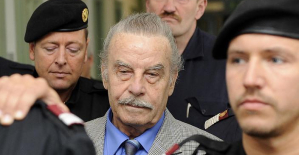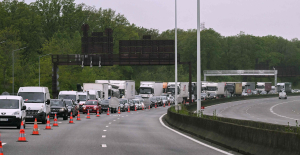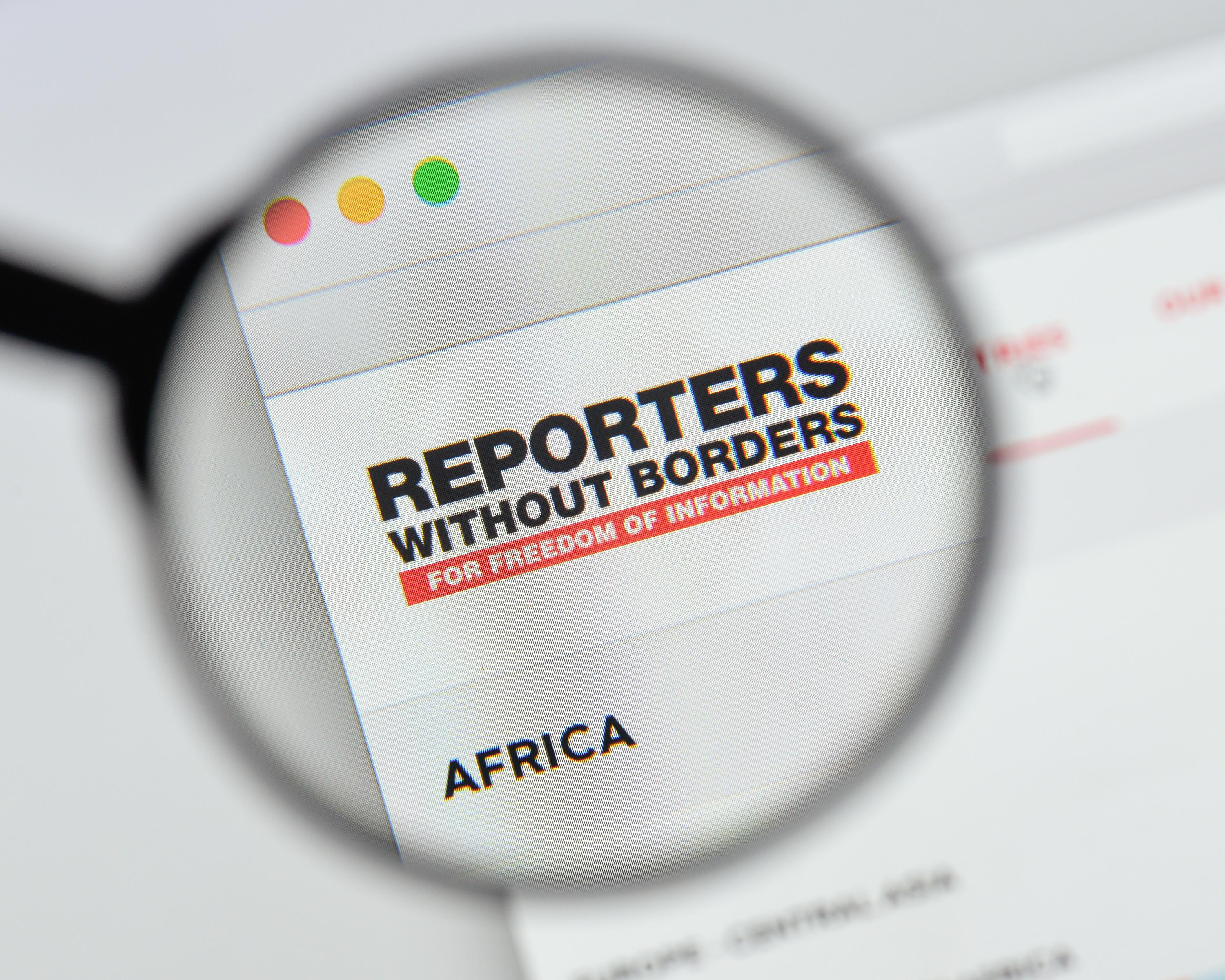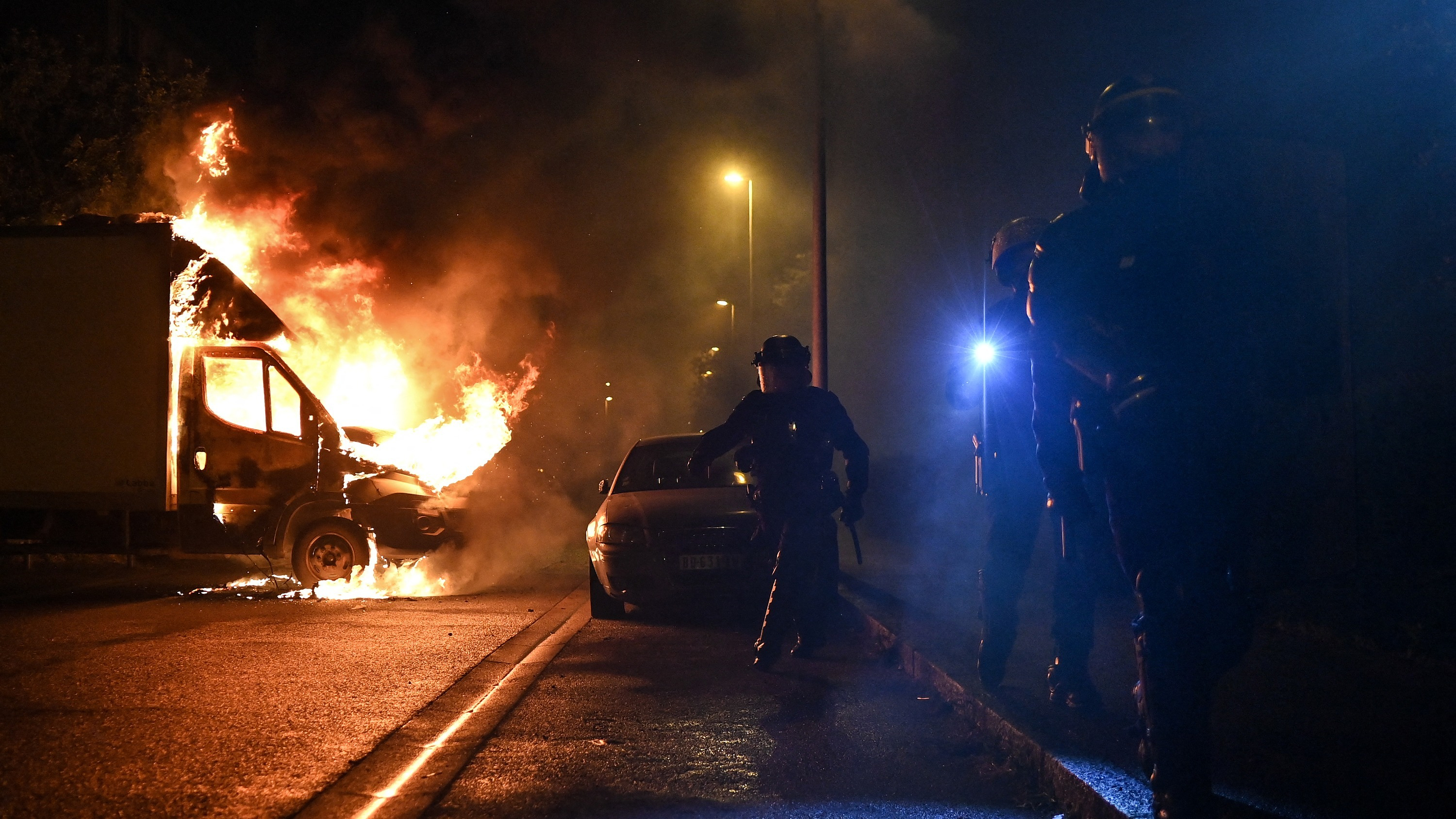45 journalists were killed in the line of duty in 2023, the lowest number since 2002, according to the latest annual report from Reporters Without Borders. In 2022, there were 61, and in 2012 and 2013 more than 140, due to the conflicts in Iraq and Syria. “A decline over a long period,” analyzes Christophe Deloire, secretary general of the association, who identifies several causes: “security measures in editorial offices, training and the allocation of protective equipment, caution, the effects the fight against impunity and the action of intergovernmental organizations. The work of NGOs is undoubtedly also having an effect..."
For several years, measures have been deployed by the media to strengthen the security of journalists, such as the use of security specialists. “Above all, they provide support for the editorial staff, who delegate decision-making in a war zone to these experts,” adds Adrien Jaulmes, who observed the emergence of this phenomenon during the 2003 war in Iraq within major English titles. The war correspondent himself has covered a multitude of conflicts, from Afghanistan in 2001 to the fall of the Islamic State in 2019.
Because war remains the riskiest subject for journalists to cover. Of the 45 deaths recorded, 23 were killed in a conflict zone. This may seem logical, but in five years, this is the first time that more journalists have died in a war zone than in a peace zone, notes the report. “The idea that a journalist can go and cover a conflict without taking the same risks as the exposed civilian population is false,” explains Adrien Jaulmes, also author of Telling the War, a History of War Correspondents (Éditions des Équateurs, 2021).
“All conflicts are different in their dangerousness and this does not always manifest itself in the same way,” continues the major reporter. “During the civil war in Syria, there was no real front... the civilian population was targeted, but there were also targeted actions against journalists, kidnappings or assassinations. In a war zone, there is a statistical danger when the population is targeted, but also the risk of being targeted as a journalist as such.”
This is evidenced by the portraits of the killed journalists detailed in the report, and the circumstances of their death which escape any rule. “Our AFP colleague, who was killed in Ukraine while accompanying a convoy of civilian refugees, had a protective vest, had been trained, had taken no particular risk... the only conclusion, “That’s how dangerous war is,” underlines Adrien Jaulmes, in reference to Armand Soldin, hit by rocket fire in eastern Ukraine in May. In 2023, he is the only journalist to have been killed while covering a country other than his own.
In addition to war, organized crime and corruption remain high-risk subjects for journalists, particularly in Latin America - notably in Mexico, where four deaths were recorded - and in Africa.
Thirteen information professionals have been killed in Palestine since the outbreak of conflict between Hamas and Israel on October 7, described as a “tragedy for journalism” by the association. In total, the ongoing war has caused the deaths of 17 journalists, including one in Israel and three others in Lebanon. 46 other journalists died in the conflict zone outside the scope of their duties, which is why RSF does not include them in its census.
“Gaza is a very particular territory, totally impervious, which presents specific constraints for journalists: since Hamas took power in Gaza in 2006, there are almost no foreign journalists based there,” notes Adrien Jaulmes , which covered the strip of Palestinian land on several occasions. “The journalists on site are Palestinians, although Israeli forces sometimes allow foreign journalists to enter the enclave for a short period.”
The circumstances of the deaths of numerous Palestinian journalists and an Israeli during the conflict led RSF to file a complaint for war crimes before the ICC, the third since 2018 relating to crimes targeting Palestinian journalists.
Of the 521 journalists detained worldwide, “more than half of journalists are imprisoned in four countries,” the report said. These are China (121), Burma (68), Belarus (39) and Vietnam (36). In China, many journalists are detained in Xinjiang province, where the Uyghur community has been harshly repressed since 2016.
In Belarus, the situation is getting worse for media professionals. In question, the dictatorship of Alexander Lukashenko which “is fiercely attacking independent media”, according to the report. Russia is following these four countries closely, with its 28 imprisoned journalists, including Wall Street Journal correspondent Evan Gershkovich.
The drop in the number of detainees, estimated at 569 in 2022, is explained by the release of journalists in Turkey and Iran, which nonetheless remain inclined to resort to the repeated imprisonment of their journalists in order to repress them. , indicates RSF. In Afghanistan, Franco-Afghan journalist Mortaza Behboudi was released in October, after 284 days of imprisonment by the Taliban regime.
Of the 54 journalists still held hostage around the world, two were captured this year: Malians Saleck Ag Jiddou and Moustapha Koné, kidnapped in northern Mali on November 7, shortly after the release of Frenchman Olivier Dubois, held in captivity for almost two years. With 38 hostages, Syria tops the list of countries where the largest number of journalists remain in captivity. It is also the only country where foreign journalists are in captivity, adds RSF, which specifies that it has “no proof of recent life” of these hostages.
The report also focuses on the fate of journalists still missing, which amounts to 84, an increase of 7 in one year. The largest number of disappearances (31) was recorded in Mexico. Nine others are counted in Syria, and five in Kosovo. Overall, “39 are victims of enforced disappearances,” the report highlights.

 Austria: incestuous torturer Josef Fritzl, nicknamed the “national monster”, could soon be released
Austria: incestuous torturer Josef Fritzl, nicknamed the “national monster”, could soon be released An airline continues to treat a centenarian as a one-year-old baby
An airline continues to treat a centenarian as a one-year-old baby Germany: the trial of nine “Citizens of the Reich” conspirators begins this Monday
Germany: the trial of nine “Citizens of the Reich” conspirators begins this Monday United Kingdom: David Cameron under fire after renting a jet estimated at 42 million pounds
United Kingdom: David Cameron under fire after renting a jet estimated at 42 million pounds Sánchez cancels his agenda and considers resigning: "I need to stop and reflect"
Sánchez cancels his agenda and considers resigning: "I need to stop and reflect" The Federal Committee of the PSOE interrupts the event to take to the streets with the militants
The Federal Committee of the PSOE interrupts the event to take to the streets with the militants Repsol: "We want to lead generative AI to guarantee its benefits and avoid risks"
Repsol: "We want to lead generative AI to guarantee its benefits and avoid risks" Osteoarthritis: an innovation to improve its management
Osteoarthritis: an innovation to improve its management Closure of the A13: would it really be possible to make the A14 free?
Closure of the A13: would it really be possible to make the A14 free? Surprise retirement of HSBC chief executive Noel Quinn
Surprise retirement of HSBC chief executive Noel Quinn Fight against disinformation: Brussels puts pressure on Facebook and Instagram as the European elections approach
Fight against disinformation: Brussels puts pressure on Facebook and Instagram as the European elections approach McDonald's results still suffer from boycott linked to the war in Gaza
McDonald's results still suffer from boycott linked to the war in Gaza The Musée du Grand Siècle in Saint-Cloud, this 100 million euro project in Hauts-de-Seine which would weaken the A13
The Musée du Grand Siècle in Saint-Cloud, this 100 million euro project in Hauts-de-Seine which would weaken the A13 Marjane Satrapi distinguished by the Princess of Asturias Foundation
Marjane Satrapi distinguished by the Princess of Asturias Foundation Royal Enfield Shotgun, 'custom' attitude from Monday to Sunday
Royal Enfield Shotgun, 'custom' attitude from Monday to Sunday End of the legal battle between Britney Spears and her father
End of the legal battle between Britney Spears and her father Omoda 7, another Chinese car that could be manufactured in Spain
Omoda 7, another Chinese car that could be manufactured in Spain BYD chooses CA Auto Bank as financial partner in Spain
BYD chooses CA Auto Bank as financial partner in Spain Tesla and Baidu sign key agreement to boost development of autonomous driving
Tesla and Baidu sign key agreement to boost development of autonomous driving Skoda Kodiaq 2024: a 'beast' plug-in hybrid SUV
Skoda Kodiaq 2024: a 'beast' plug-in hybrid SUV The home mortgage firm rises 3.8% in February and the average interest moderates to 3.33%
The home mortgage firm rises 3.8% in February and the average interest moderates to 3.33% This is how housing prices have changed in Spain in the last decade
This is how housing prices have changed in Spain in the last decade The home mortgage firm drops 10% in January and interest soars to 3.46%
The home mortgage firm drops 10% in January and interest soars to 3.46% The jewel of the Rocío de Nagüeles urbanization: a dream villa in Marbella
The jewel of the Rocío de Nagüeles urbanization: a dream villa in Marbella Europeans: a senior official on the National Rally list
Europeans: a senior official on the National Rally list Blockade of Sciences Po: the right denounces a “drift”, the government charges the rebels
Blockade of Sciences Po: the right denounces a “drift”, the government charges the rebels Even on a mission for NATO, the Charles-de-Gaulle remains under French control, Lecornu responds to Mélenchon
Even on a mission for NATO, the Charles-de-Gaulle remains under French control, Lecornu responds to Mélenchon “Deadly Europe”, “economic decline”, immigration… What to remember from Emmanuel Macron’s speech at the Sorbonne
“Deadly Europe”, “economic decline”, immigration… What to remember from Emmanuel Macron’s speech at the Sorbonne These French cities that will boycott the World Cup in Qatar
These French cities that will boycott the World Cup in Qatar Premier League: Manchester United ready to sell the vast majority of its workforce
Premier League: Manchester United ready to sell the vast majority of its workforce Paris 2024 Olympics: when will Thierry Henry reveal the list of Olympic Blues?
Paris 2024 Olympics: when will Thierry Henry reveal the list of Olympic Blues? Rugby: Qatar's astronomical offer to host the biggest clashes between North and South
Rugby: Qatar's astronomical offer to host the biggest clashes between North and South OM-Atalanta Bergamo: at what time and on which channel to watch the Europa League semi-final first leg?
OM-Atalanta Bergamo: at what time and on which channel to watch the Europa League semi-final first leg?

















